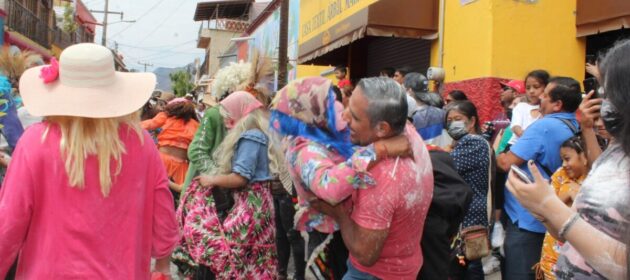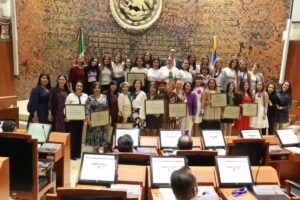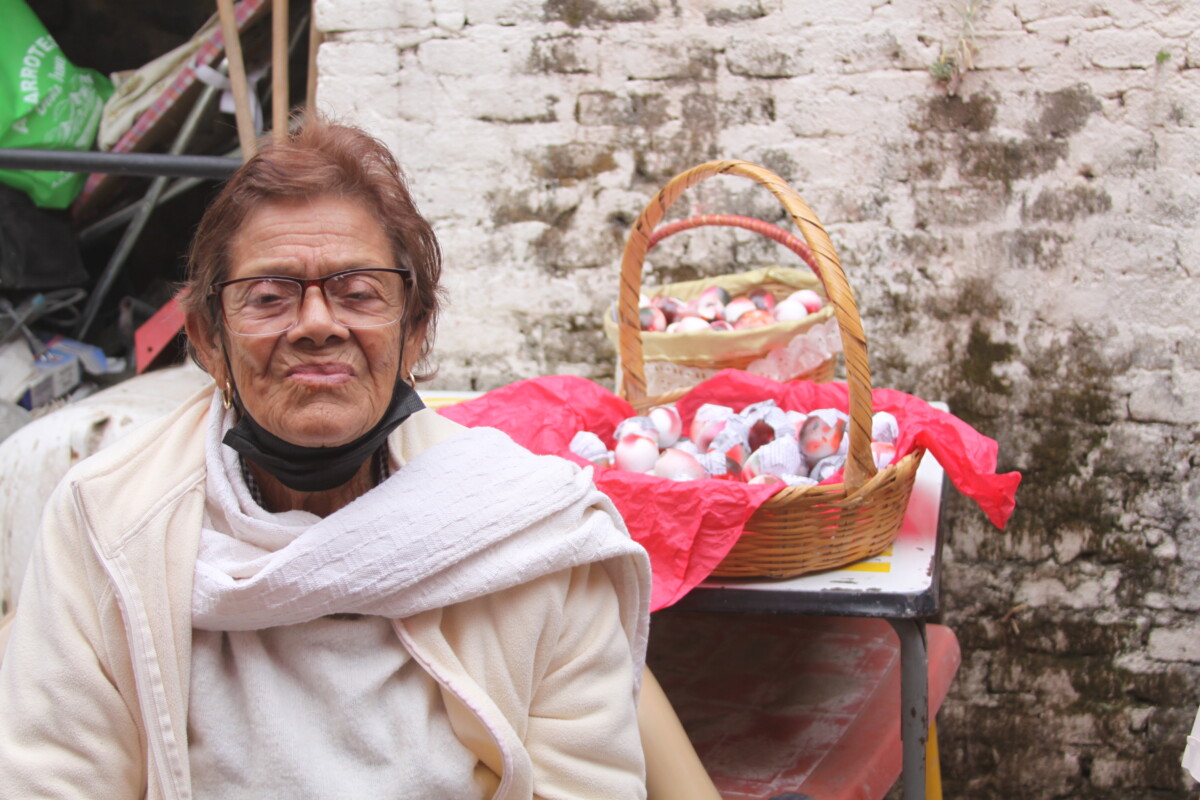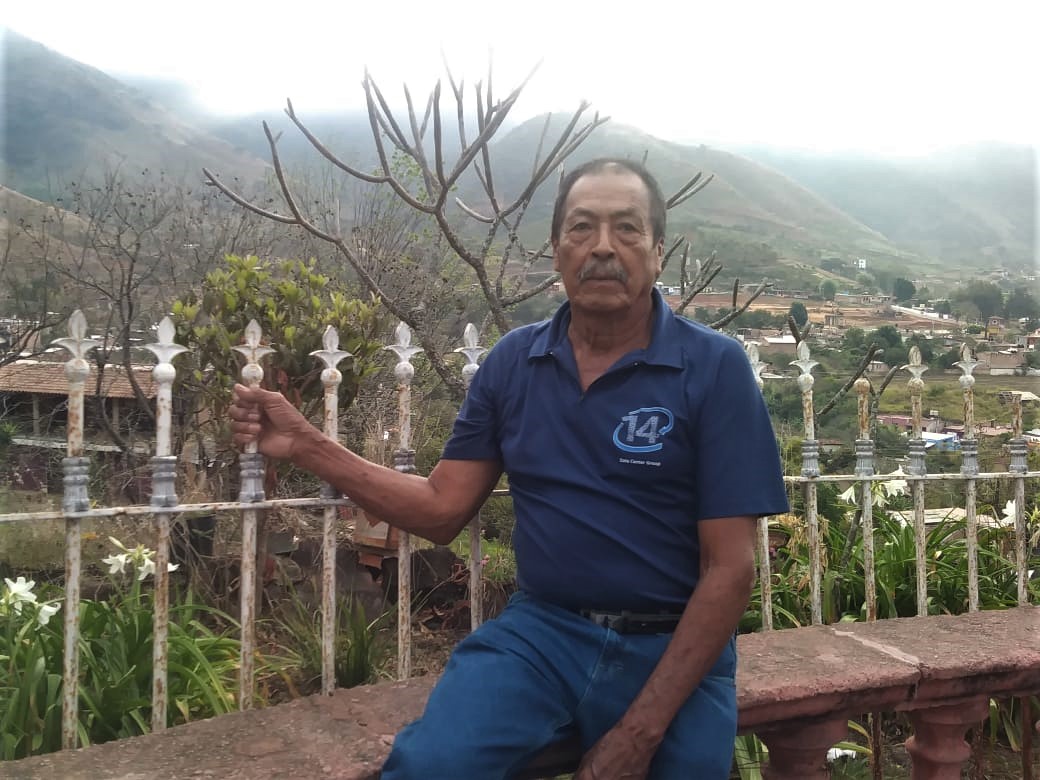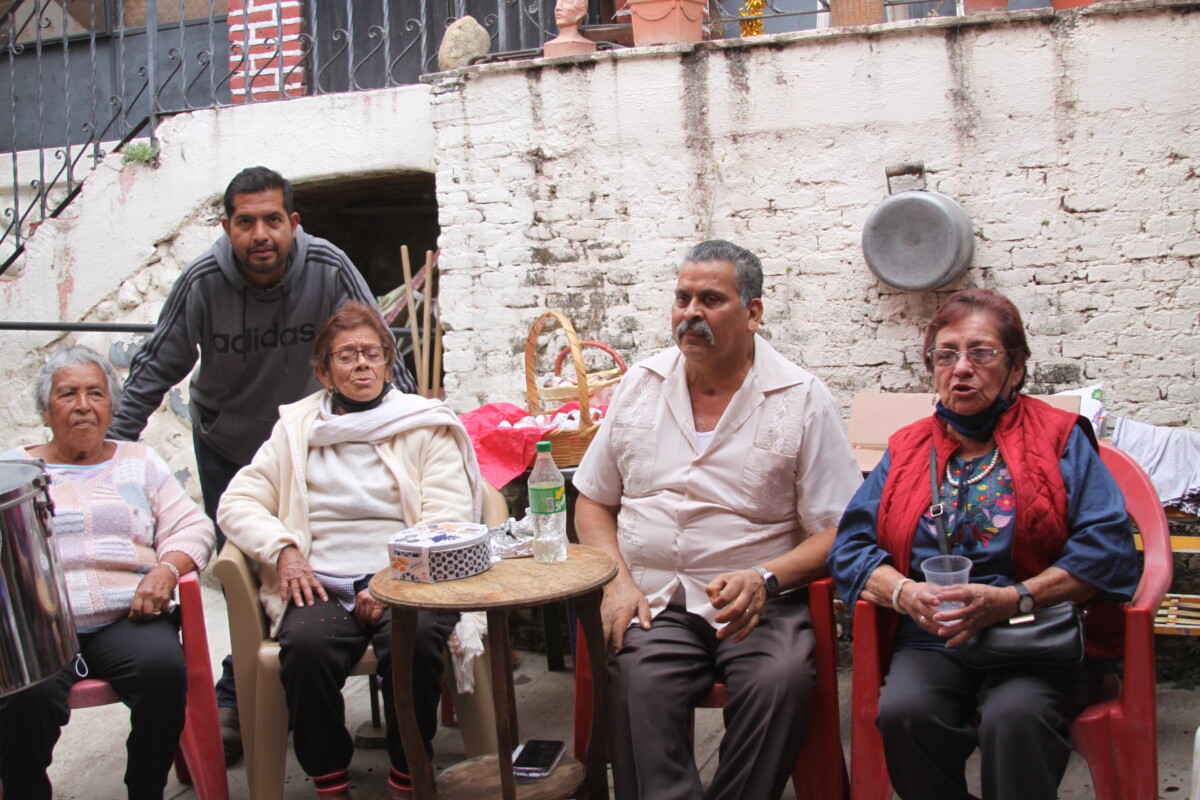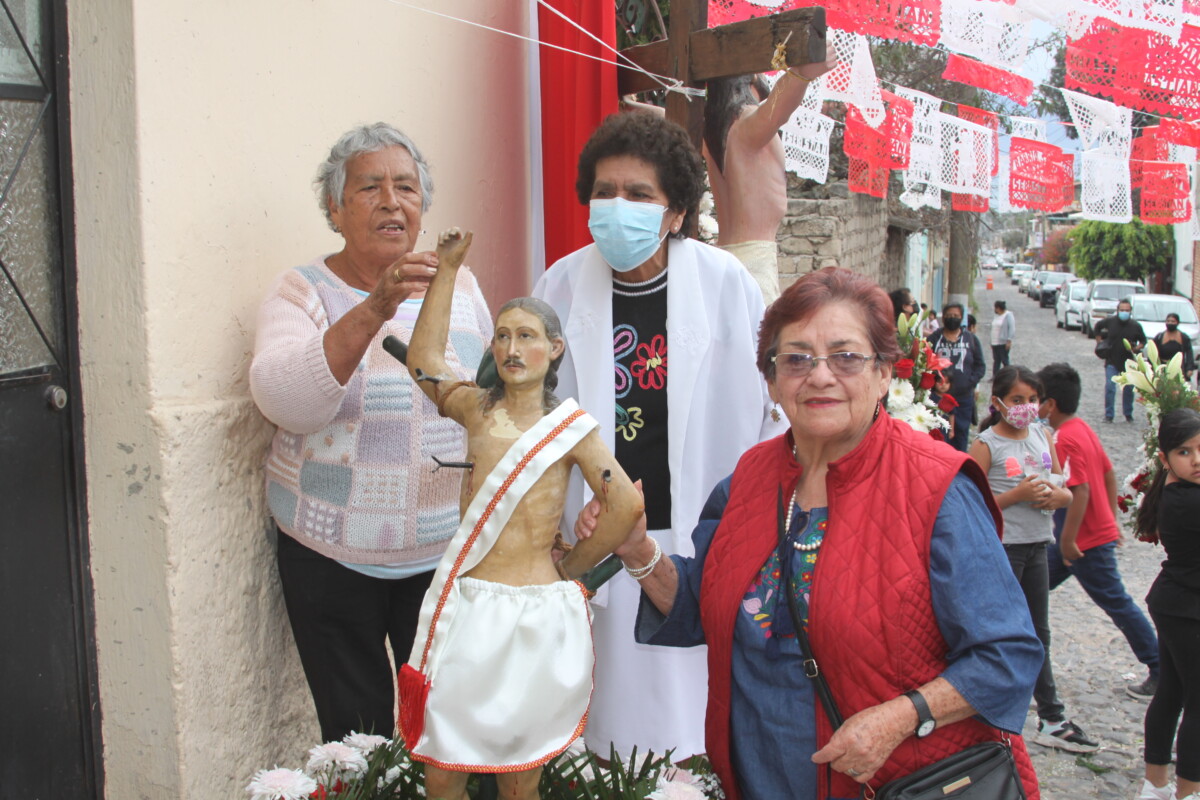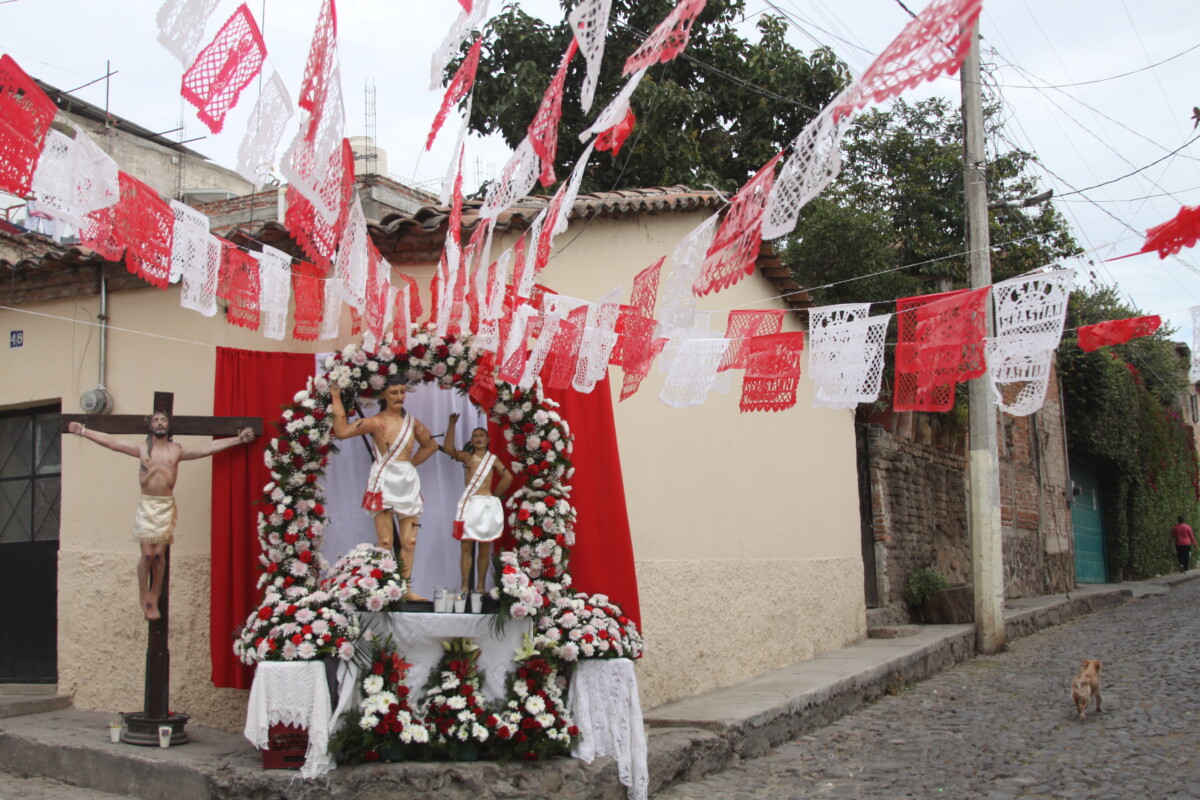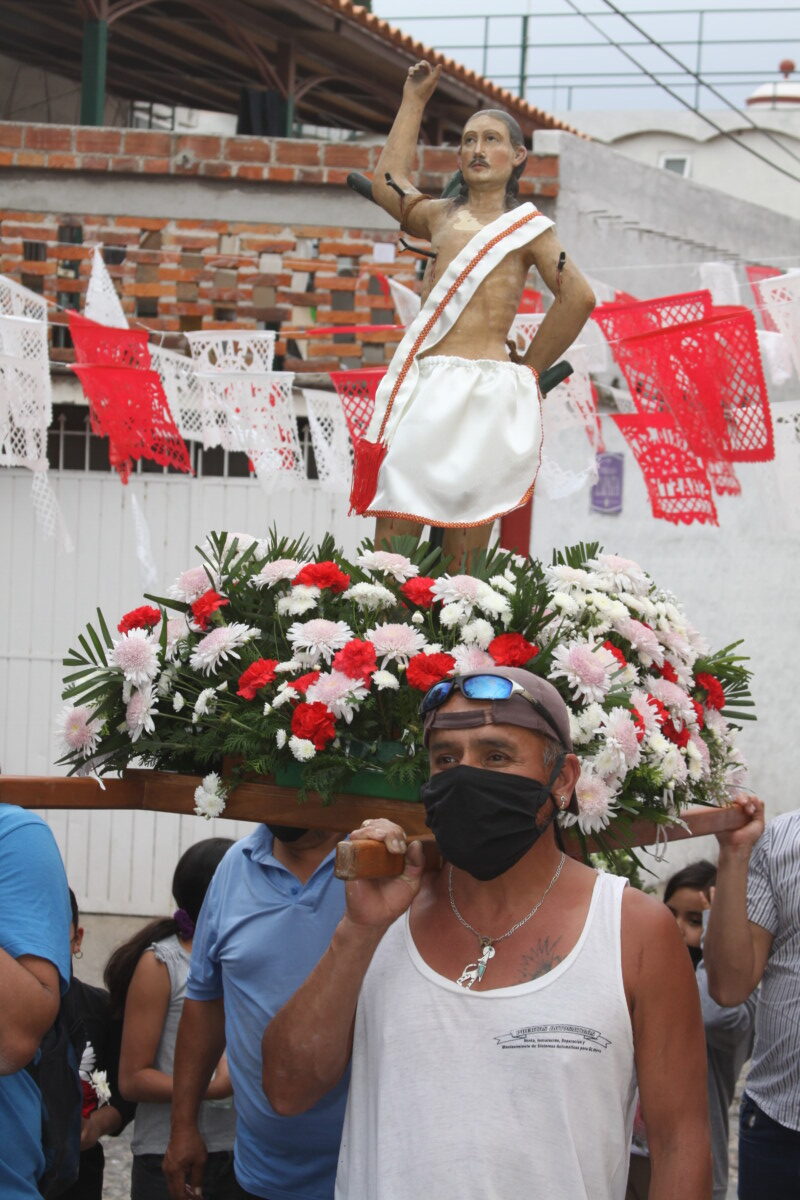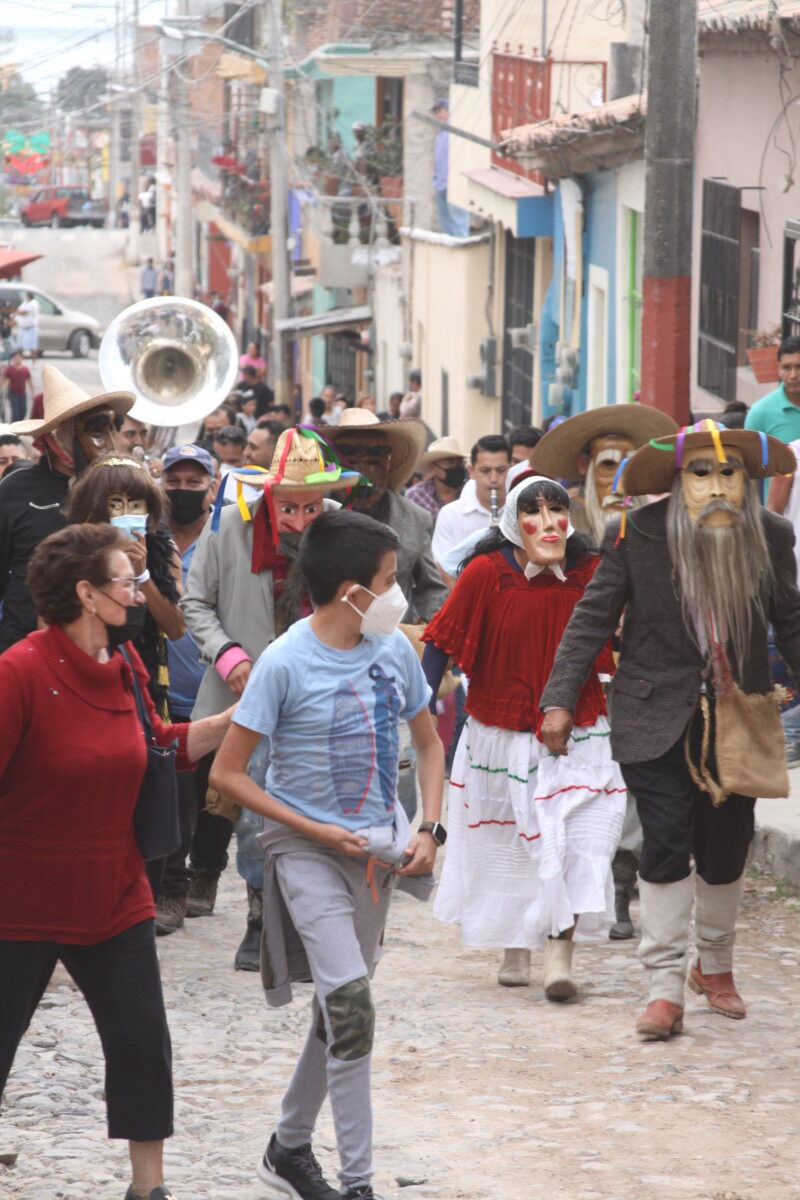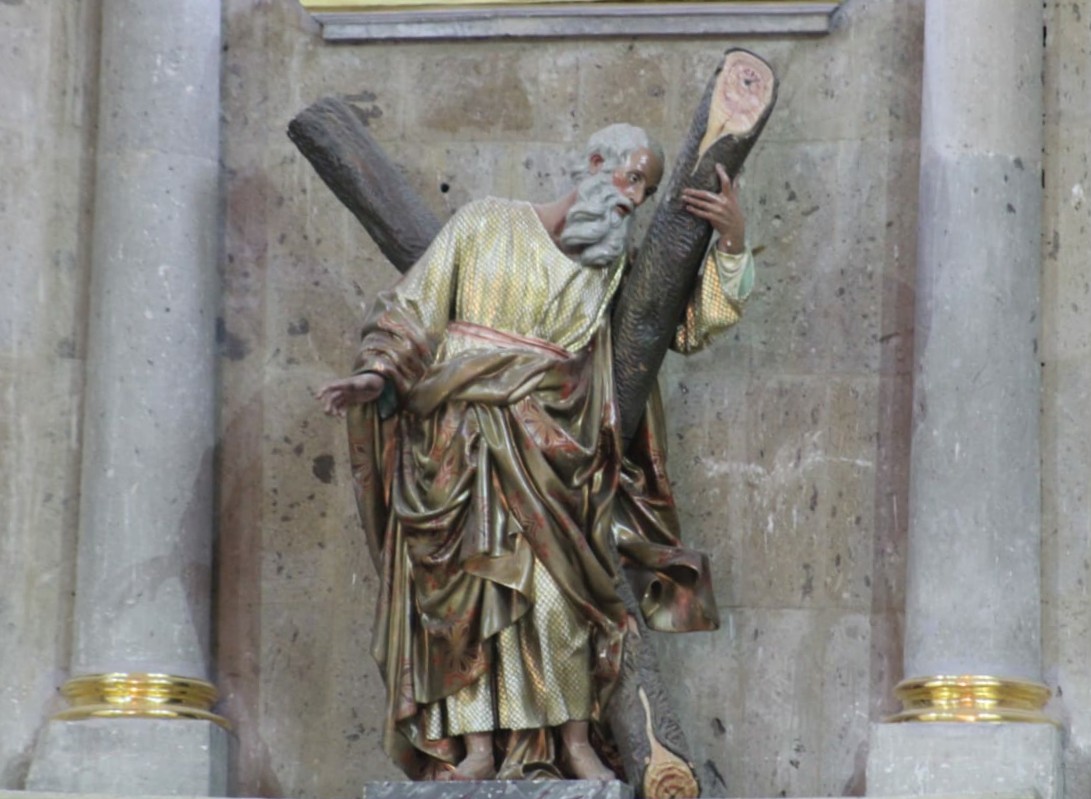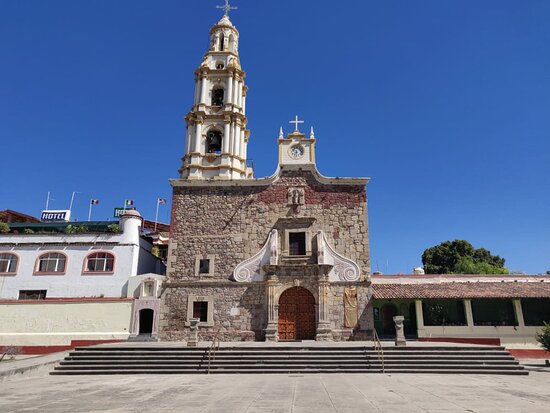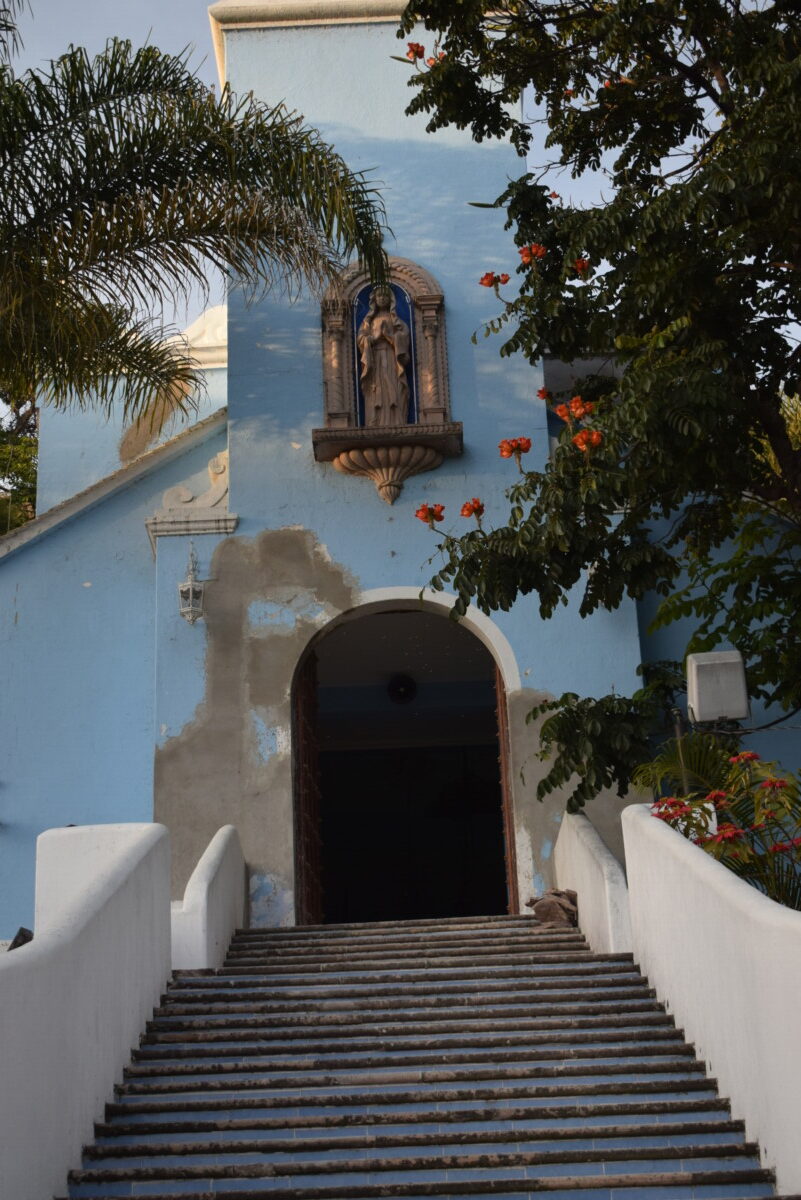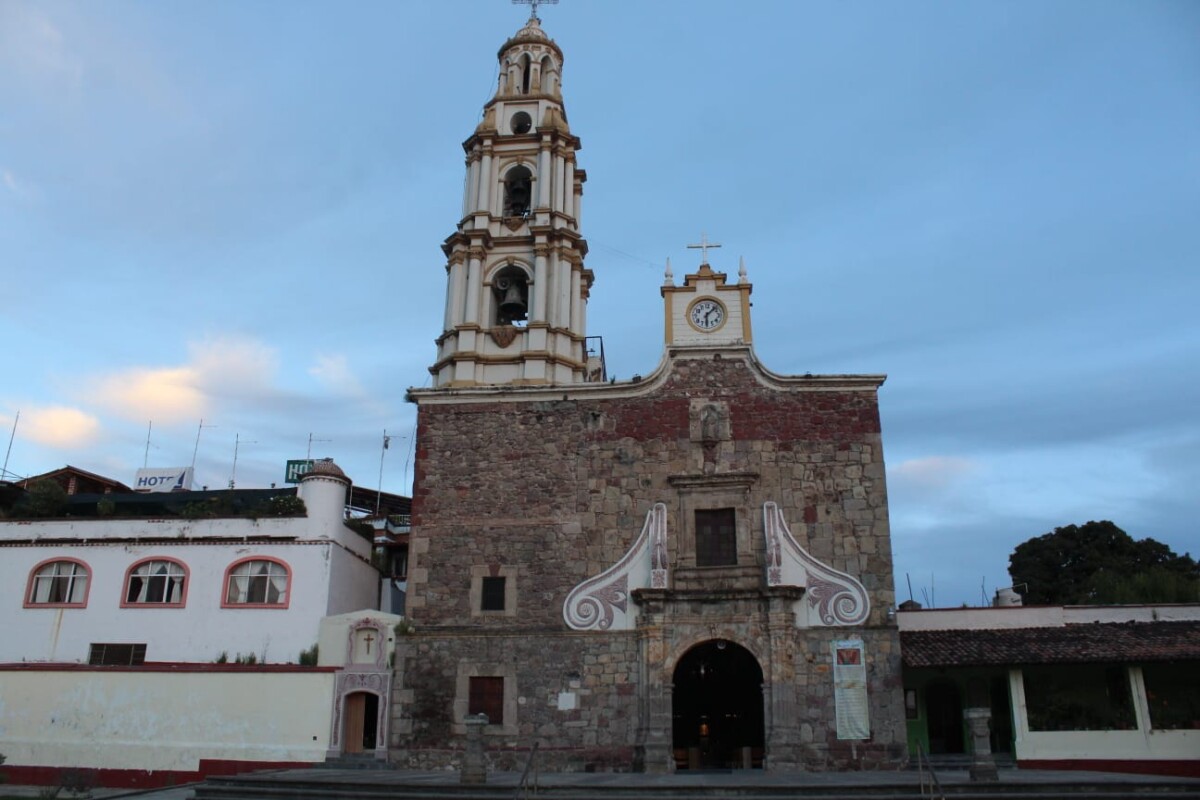historia
Regresa el Carnaval al Pueblo Mágico de Ajijic
Las Sayacas bailaron e interactuaron con espectadores en múltiples ocasiones durante el recorrido.
Redacción.- Luego de un año de ausencia y por motivos de la pandemia, el carnaval regresó al Pueblo Mágico de Ajijic con todo su colorido, creatividad y tradición, por lo que Semanario Laguna te comparte una galería de imágenes de Sofía Medeles que muestran cómo han sido los primeros tres días del Carnaval que en ausencia de los carros alegóricos, las Sayacas y Sayacos se han lucido como nunca.

Cómo es tradición, decenas de jóvenes «cucaron» a las Sayacas con tal de que los «polvearan» con harina.

Desde el inicio hasta el fin del desfile, las Sayacas bailaron luciendo sus trajes multicolores.

Hay Sayacas que lucen coloridas faldas, son muy coquetas y se lucen bailando como las que se presentaron durante el tercer día de desfile.

Los y las jinetes también son parte importante para que un desfile sea tradicional.
Women invited to participate in the «Hermila Galindo Acosta» State Award
For the fourth consecutive year, the Local Congress has presented the recognition to outstanding women of the State.
Héctor Ruiz Mejía (Jocotepec).- For the fourth consecutive year, the Jalisco State Congress will recognize women who have stood out for their work and struggle for their rights. This year it will seek to open the call to the interior of Jalisco.
The «Hermila Galindo Acosta» award, established in honor of the Mexican writer, politician, suffragette feminist and journalist, seeks to recognize those who work to protect the rights of domestic workers, for gender equality, and against violence, as well for as environmental issues, among other areas.
The Deputy for District 17 and President of the Legislative Commission on Substantive Equality and Gender, María Dolores López Jara, said that this year they will seek to extend the call for entries beyond the Guadalajara Metropolitan Area, with the intention of diversifying the profile of applicants.
This means that women from all municipalities of Jalisco will have the possibility of being recognized, including all those women inhabitants of the Chapala area, who have highlighted, promoted, innovated, or led the way in favor of women’s rights.
The dates for submitting applications will be from February 4 until February 25; the applications must be sent to the Commission for Substantive and Gender Equality, along with the corresponding documentation, by e-mail to: dolores.lopez@congresojal.gob.mx
The recognition will be granted as part of the commemoration of the International Women’s Day, on March 8, at 11:00 a.m. in Plenary Session, in the Congress of Jalisco.
Translated by Kerry Watson
Lakeside Chronicles:
Guadalupe Arias Ibarra is a lawyer and chronicler. He has written three books on the history, events and legends of Jocotepec. Photo: María del Refugio Reynozo Medina.
By María del Refugio Reynozo Medina
Guadalupe Arias Ibarra acquired his taste for listening to and rescuing local stories from his mother, who told him many tales, which he in turn recovered from local oral tradition.
He is a lawyer by profession, a graduate of the University of Guadalajara as well as a storyteller by vocation. While still young, he began to treasure in his memory the stories and landscapes of old Jocotepec, as well as the characters that inhabited it.
As municipal chronicler (1988), one of his most-revered stories is about the origin of the two Christs of Jocotepec – the Lord of the Mount and the Lord of the Huaje, whose existence dates to the wife of Mateo Lucas. She saw a light in the mountain, at the spot of the tree from whose trunk the images emerged. This story is documented in the book, “The Two Christs of Jocotepec. Origen y evolución de su culto y de sus fiestas,” by Francisco Javier Velázquez Fernández and Cristina Alvizo Carranza.
A 1974 television program also stimulated his interest in local history. The municipal president was invited by Channel 4 to bring on a chronicler who could talk about the history of Jocotepec. Arias remembers the person they invited said very little about the founding of the municipality. Because the person’s lack of knowledge was more than evident, Arias set out to be a connoisseur of the memories and history of his town.
In his first inquiries he realized that the most complete archives are those found in the parish, being the least vandalized during the episodes of guerrillas and rebellions.
He says there are important steps along the path of the chronicler. First is necessarily having an interest in the rescue of history and love for the land. Then a sharp observation of reality, taking good notes of one’s findings, delving into subject development and revisiting the texts.
Guadalupe Arias is the author of “Jocotepec, historia de un pueblo” (1988); “Jocotepec. Sucesos, leyendas y algo más” (2019); “490 Aniversario de la fundación de Jocotepec 1529-2019” (2019); and “Semblanza de la Escuela Preparatoria Regional de Jocotepec” (2013).
He was one of the founding teachers at the Preparatory School of Jocotepec. He was invited to be part of the faculty during the administration of Mayor María Guadalupe Urzúa Flores, teaching philosophy and history, as well as classes in the social and political areas.
“I’ve been there 29 years, three months, ten days,” he says with a peaceful smile.
Another of his passions is hunting, which has allowed him to explore areas such as Zacatecas, Coahuila and Durango. He has also been playing soccer since he was 10 years old. He belongs to the Super Veterans League of Jocotepec.
For lawyer Arias, it is fundamental for citizens to know the culture and customs that give identity. “The best way to rescue the memory and oral history is by trapping it in letters,” he said.
Translated by Mike Rogers
Lakeside Chronicles: The feast of San Sebastian
Doña Irene prepared the eggshells with confetti weeks before
María del Refugio Reynozo Medina (Ajijic) – January 20 is the most awaited day for the devotees of San Sebastian.
Doña Irene is 82 years old. As a child, she accompanied her parents to the celebration of San Sebastian. She has lines of time on her face; most of them are hints of a smile, because Doña Irene smiles a lot. Her chatter is a contagious melody. She welcomes the visitor as if she had seen him yesterday and as if she already knew him. “Let’s have a little refreshment,» she says. Her conversation invites you to stay and contemplate the afternoon by the cobblestone street.
Although now it is not like other years, she is looking forward to the feast of San Sebastian with joy and she is providing almost 30 chickens for the mole.
Irene Martínez Cervantes lives in the San Sebastián neighborhood in Ajijic.
She remembers her parents’ veneration for the patron saint San Sebastian, whom they celebrated every year on January 20. Her family used to organize this celebration and she decided to continue it, despite the Covid-19 pandemic restrictions.
Seventy-five-year-old Don Antonio Arceo, another of the organizers, follows the tradition of his ancestors. He remembers that in the past, the sponsor of the festival was by invitation.
Two or three months before the festival, those who had been in charge the previous year would select another person to continue the tradition. The previous organizers would visit the new person, bringing a carafe of tamarind or pomegranate punch as a gift. They would bury the tightly closed punch for up to two months and add pieces of quince when it was unburied. When the drink was ready, the new sponsor agreed to assume the responsibility of covering the expenses of the drink, the food, the music and the tachihual bread (a traditional bread loaf). The new sponsor recruited ten to twelve people to help him. The following year he would make the same invitation to another acquaintance.
A handshake, a shared drink of punch and a word as a guarantee was enough to close the commitment. So says the song that is engraved in the memory of the faithful, by dint of repeating it every year during music and confetti.
This charge I give them
to those who remain.
So that they never forget it
and that they pay for it.
Weeks before January 20, Doña Irene starts to paint eggshells and fills them with confetti for the papaqui (the throwing of eggshells and confetti to the rhythm of the song of San Sebastian) That is why one of the mischievous stanzas says:
Poor San Sebastian
who never knew underpants.
The first ones he bought
he exchanged them for eggshells.
On the day of the procession Doña Irene is sitting inside the courtyard with some of her co-workers and close friends. She watches with pleasure the parade of men, women and children who come for the plates of food. Women and children carry towers of plates of mole, beans and rice to their homes. Some men take their rations and packages of tortillas to eat sitting on the sidewalks.
At the corner of Emiliano Zapata and Marcos Castellanos streets sits the altar to San Sebastian. There are two figures. The smaller one measuring approximately one meter and brought from the church the previous day. The other is one about a meter and a half that Doña Irene had sculpted. They are in the middle of a large arch of red carnations and chrysanthemums, on a table covered with white tablecloths.
“There are few people now,» says one of the attendants. Before the pandemic, food was served at tables set up along the street, and casseroles with rice and mole accompanied the procession.
Music has been playing since last night at San Sebastian. Not just one band, «it’s a group,» a young man tells me. Members of different bands come to play for the patron saint.
One woman and seven men make up the cast to liven up the procession. After three o’clock in the afternoon, they begin to prepare the small wooden platform where the smallest sculpture of San Sebastian, loaned from the parish, will be placed. He has starred in the festival for as long as they can remember.
Saint Sebastian is shown with one arm backwards tied to a pole and the other bent towards the heavens. His right index finger is missing. He has a taciturn look, curly shoulder-length hair, a mustache, thin outlined eyebrows and a cracked chest and arm. Five arrows are embedded in his body, which, according to the history of the saints, recall the rain of arrows he received in his martyrdom.
Doña Irene approaches with her companions to see him off, they surround him and talk in his ear, because he will not visit them again until next year. Little by little about 50 people arrive. The band begins to play. Suddenly the first sayaco (traditional, cross-dressing, masked characters who throw confetti or flour) appears wearing a work shirt, khaki colored jacket, boots, hat, and a backpack. He wears a long raw-colored wooden mask, from his cheeks emerges a long beard, bushy eyebrows and a straw-colored mustache.
Six more sayacos arrive dressed as exotic women. One of them, aided by a pair of balloons, shows off her bulging breasts under a flowered blouse. Another wears a blouse of gold and black threads with a tiara of sequins. The youngest sayaco looks like a teenaged girl wearing a scarf over her crimson-plated mask and a black dress edged with blue lace. She stomps her booties on the uneven streets.
The sayacos lead the procession dancing and waving their circular skirts non-stop, followed by the band. The sculpture of San Sebastian follows, carried on the shoulders of four men. As it passes through the elementary school, the students come out to watch through the entrance gate. The sayacos bring their masks close to the gate while the little ones laugh.
San Sebastian is returned to the parish amidst cheers and applause. The sayacos do not enter the temple and they wait outside to return in procession with the music of the band.
Now the Sayacos are the absolute masters of the parade, they take out fists of confetti from their backpacks to throw at the women. Up on a balcony a little girl hides between her mother’s legs, a sayaco jumps to scare her, the little girl cries and the woman laughs and hugs her. A group of about 30 children taunt the sayacos, run and urge them to chase them. Upon their arrival in the heart of the neighborhood outside Doña Irene’s house, the music continues to play and the Sayacos dance a little. Less than 30 attendees begin to break shells filled with confetti on their heads while the music plays. There Bertha Baron intones with two accompanists the traditional song to San Sebastian.
Say goodbye to the meat
and also to the sausage.
Because Ash Wednesday is coming
Ash Wednesday is coming.
And so, ends this celebration in which many collaborate, where adults play like children in a rain of confetti, all singing the traditional, fervent and irreverent song.
Translated by Nita Rudy
PHOTONOTE : The Virgin of Zapopan visits the Lord of El Monte
The Entry of the iconic image of the Holy Virgin of Zapopan, Patroness of the Archdiocese of Guadalajara and Queen of Lake Chapala, kicked off the celebrations of Señor del Monte, Patron Saint of the town of Jocotepec since 1833. The celebrations which began January 6, recalled that according to tradition, Señor del Monte saved the people of Jocotepec from the Morbus Cholera epidemic. The Holy Virgin of Zapopan is also known for miracles such her emergence intact from the collapse of a chapel in 1609
The Holy Image stayed until 4:00 pm on Sunday to return to its resting place in the Basílica of Zapopan, where images of the Virgin and Señor del Monte were worshiped by hundreds of faithful in the hope of putting an end to the new global pandemic.
Opinion: Looking at life in Lakeside
By Patrick O’Heffernan
Michi-Cihualli is the mythological goddess who symbolizes the essence of the waters and lands of Lake Chapala. According to the legend, she is the mediator of good weather and the queen of the wind- she blows the gales of the four cardinal points, enabling the fishermen to know the direction of the squalls on the lake and t and farmers the good weather for corn.
But an important part of the legend of Michi-Cihualli is her first appearance: when the ruling tribe practiced human sacrifice and threw children into hot springs, Michi-Cihualli became enraged and created powerful winds, whirlpools, clouds of ash and eventually an earthquake to stop the desecration of her waters.
We don’t sacrifice humans any more, but we are sacrificing the Lake itself and the Ribera – the lands of Lake Chapala — with pollution, traffic, illegal development, and poverty. And Michi-Cihualli is again blowing her powerful breath over the lake in warning, only this time it is not winds she is raising, but a rekindling of the values she taught and resistance to those who would float them.
Next week, on January 20, 21, and 22, her winds will gust from one of her spiritual homes in Ajijic, La Cochera Cultural, in a three-day Festival of Michi. A residence for artists of all kinds, La Cochera Cultural is curated by Antonio López Vega, an artist who has spent a lifetime capturing and chronicling the spirit of Michi-Cihualli in painting and sculpture. The Festival he is curating at La Cochera Cultural will use film, art, music, dance, and discussion to explore the spirit and lessons of Michi-Cihualli and what is happening today in Ajijic.
In a separate but parallel effort, a group of musicians and artists are considering a concept paper Espiritu de Music y Art, to bring the lifeforce of Michi-Cihualli to Ajijic and San Antonio-Tlayacapan all year round through a marriage of art and music. They are responding to call by Ajijic Culture Director Santiago Baeza (who has just resigned) for events at local venues bringing together two of Ajijic’s greatest assets: artists and musicians.
In another separate but parallel effort, the Pueblo Mágico Ajijic Committee is anticipating an infusion of money for ventures enhancing and promoting the magic of the pueblo. While it waiting for funds, the Committee is developing plans and evaluating projects for their contribution to the Pueblo Mágico designation.
Green light for Ajijic to celebrate its Patron Saint with conditions
San Andrés Apostle, patron saint of Ajijic. Sofía Medeles.
Sofía Medeles / Translated by Patrick O’Heffernan (Ajijic, Jal.)– A few days before the start of Ajijic’s patron saint festivities (November 22-30), the authorities have finally given the green light for the festivities, which, due to pandemic restrictions, will be held as the ancestors used to do it, the old-fashioned way.
The conditions include a closing time of 12:00 midnight, a restricted capacity, sanitary checkpoints in charge of the guilds, signage at entrances and exits, permanent use of masks and monitoring by the Municipal Government.
Maximiliano «Max» Macias, who is in charge of the delegation’s office, commented that they are working together with merchants, guilds and organizing groups, to be able to bring a very healthy and old-fashioned celebration.
«They will be different this time the festivities, as to come with the family, spend some time and have dinner. We are starting little by little and reactivating the economy. For example, merchants who have not been able to make a living will be allowed to work, as long as they respect the requirements of the Ministry of Health,» said Max.
Likewise, through the delegation’s web page -Delegación Ajijic 2021-2024-, the calendar of activities for the novenario (9-days of masses and celebrations) was published; The guild schedule is: Nov.22nd musicians’ guild), Nov. 23rd merchants’ guild, Nov. 24th terrace owners who reached an agreement, and Nov. 25th the new youth guild). People agreed to bring musical groups to perform at the kiosk, while from November 26th to 30th, the activities that will take place will depend on the budget of the remaining guilds.
People have taken this news as good, since, both in social networks and in interviews conducted by Semanario Laguna, they expressed their joy for the realization of the festivities. «It is good because on the one hand we see that little by little we are getting out of this pandemic, and on the other hand because they give the population a space to have fun,» highlighted Sara, an interviewee from Ajijic.
Finally, the person in charge of the office called the attendees to the celebrations in honor of Saint Andrew the Apostle, and the merchants, to respect the established measures, otherwise, with all and penalty, they will be called to attention.
The program of the religious novena to St. Andrew the Apostle will be held as usual
The program of activities and participating guilds is on the wall of the parish of San Andrés Apóstol
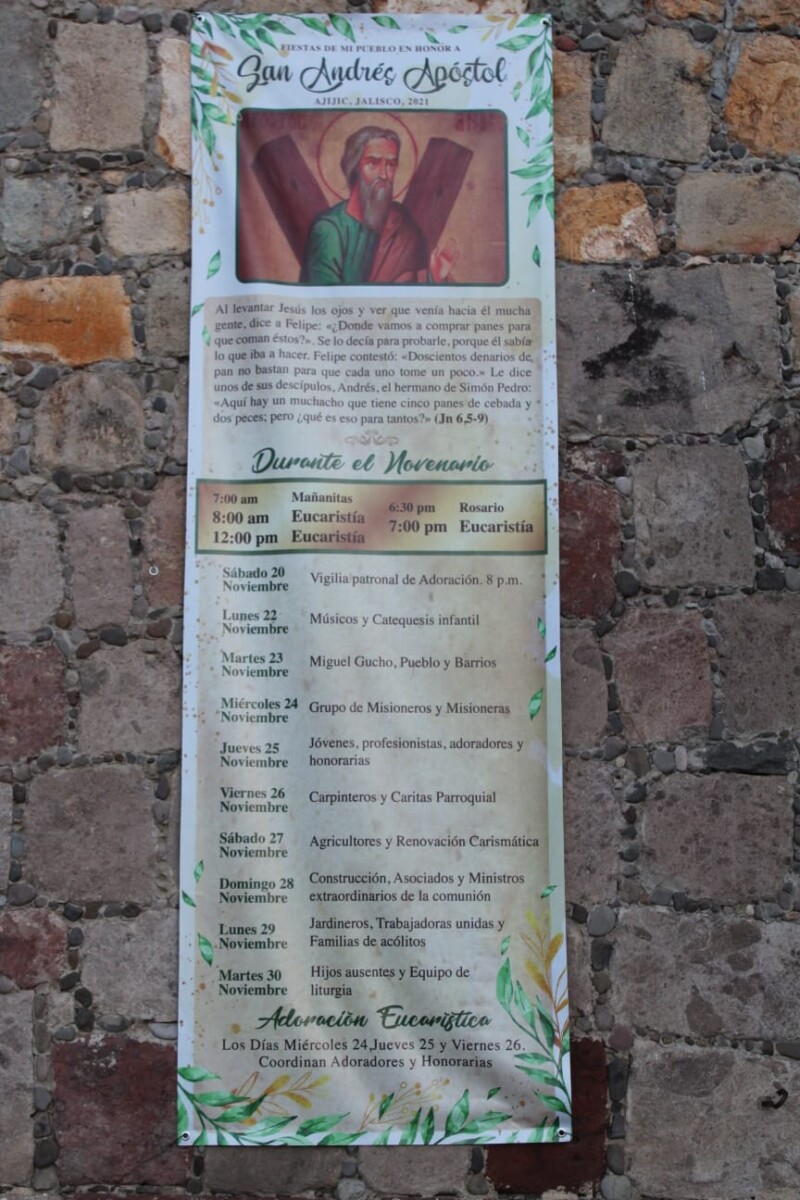
The program of activities and participating guilds is on the wall of the parish of San Andrés Apóstol.
Sofía Medeles /Translated by Elisabeth Shields (Ajijic, Jal.)- The religious celebration of San Andrés Apóstol will take place in the usual way -unlike the celebrations in the main square, which will have modifications-, with the mañanitas, masses, rosaries and Eucharistic adoration.
The mañanitas will be held at 7:00 a.m. The masses will be held at three different times, 8:00 a.m., 12:00 p.m. and 7:00 p.m. Rosaries will be at 6:30 p.m., and Eucharistic adoration – in charge of Adorers and Honorary Adorers – will be on Wednesday, November 24, Thursday, November 25 and Friday, November 26.
Ajijic’s agricultural guild in danger of disappearing
Photo: St. Andrew Catholic Church.
Sofía Medeles (Ajijic, Jal.)- With no fields to sow and no cows to herd in Ajijic, the farmers’ guild, once one of the strongest of the nine guilds, is now one of the hardest hit in the Ajijic’s patron saint festivities.
The festivities in honor of San Andrés Apóstol are held from November 22 to 30 In the Parish of San Andrés Apóstol, where the patron saint of Ajijic is located.
Semanario Laguna spoke with one of the members (of the guild. Ramona Díaz, receiving the media outside her house hiding her hands to protect herself from the cold, nostalgically commented that her membership in the guild is because she inherited it from her father, who inherited it from her grandfather. Senora Diaz acknowledged that the guild is one of those that has been fading the most with time.
«It used to be a robust day because there was a lot of farming and ranching, but the guild members have been doing less and less. Today there are fewer than 25 of us who cooperate, and there is no longer anywhere to plant or have livestock, that is why the festivities have been lost,» she mentioned while raising her voice a little to be able to stand out among the noise of trucks and cars passing by outside her home.
She went on to say that the only thing left is the name, because only memories of this trade remain, and they will probably be those of this last generation. «I don’t think I will pass it on to my children, because they are no longer committed to the faith or to the profession. Not only my children, many young people no longer approach religion today.»
She said that another important factor in the lack of participation not only in her guild, but in all the guilds,is the diminished the day of the youth which is a colorful day with a lot of celebration in other areas, but here it is different, because they have been leaving aside religion and customs, they only see the celebration.»
Looking to the side, she recalls a tradition that is basically lost, in which the guild on the following day, made a small procession with lanterns to get to the last mass of the day which represented that they were receiving their day. They called this the «entrada.» «It would be nice if those of us who participate in the guilds could agree to wear a shawl and wear our tresses, so we could show more of our traditions and roots.»
Finally, she called on the community of Ajijic, adults, youth and children, to get more involved in the traditions that remain since, with pride, she says it is part of what makes Ajijic magical. «Another one I remember is the battle of the roses -men giving roses to women during the dances in the plaza. It was nice and fun. It should be done again and we could motivate them, for example, by giving a prize to the one with the most roses. Let’s not let the traditions that made us what we are die.»
Translated by Sydney Metrick
The Lourdes Chapel will open its doors to the public after three years of being closed
The neighbors of the Lourdes neighborhood will see the doors of their chapel open to the public for the celebration of the Virgin of Guadalupe. Photo Jazmín Stengel.
Jazmín Stengel – After being closed to the public for more than three years and after six months of restoration work, the Chapel of Lourdes will finally open its doors to the public to commemorate the day of the Virgin of Guadalupe on December 12, as was done in 1940.
To date, more than 500,000 pesos (almost $24,000 USD) have been invested in the restoration work, according to the civil engineer, Enrique Petersen. These resources come from what the neighbors have been able to raise through donations, most of the time in material.
«Unlike earlier, they now prefer anonymous donations», commented Alejandra Martinez, daughter of Tere and Jose (Pepe) Martinez, neighbors of the community and treasurers of this collection. She added that many Chapalenses and foreigners have contributed their share, including Enrique Petersen who undertook the job of directing the work without charging a peso.
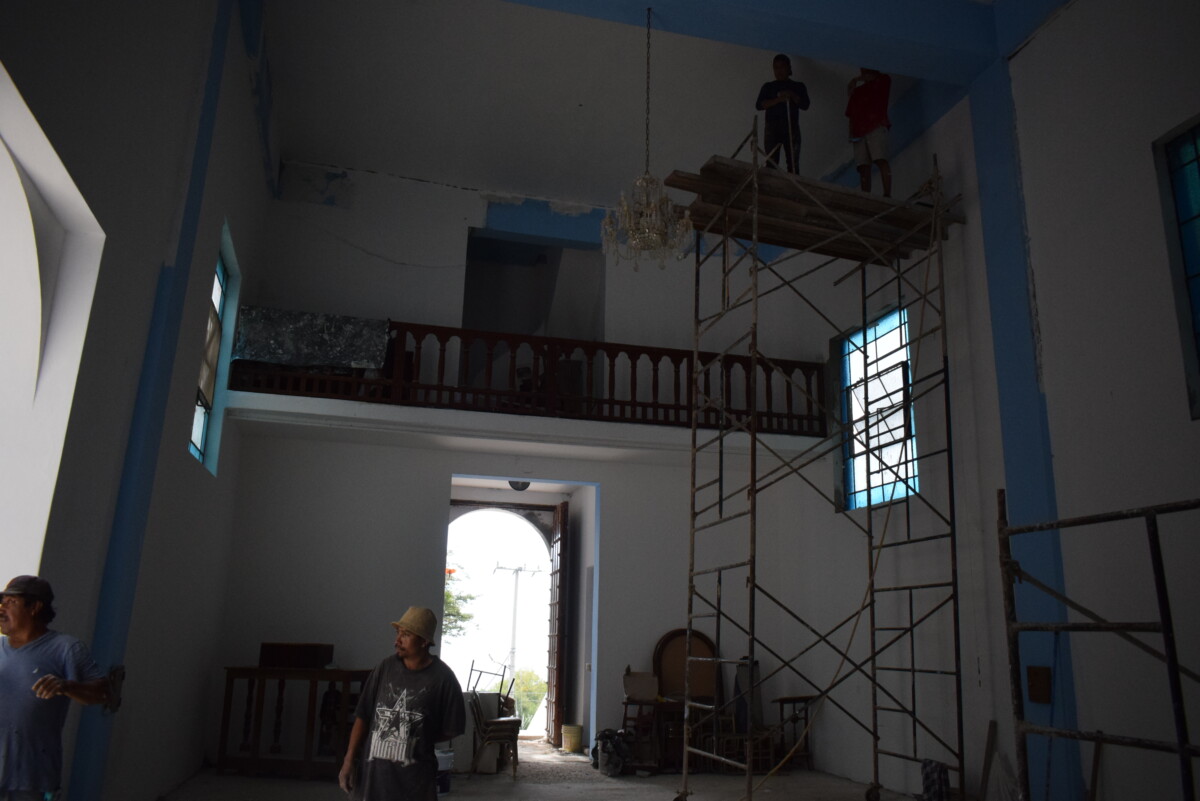
After six months of restoration work, there are still pending details of painting and finishing in the temple. Photo Jazmín Stengel.
The task has not been easy, since the labor expenses and some materials not donated tallied up to 70 thousand pesos one month, with even more expenses. The average monthly expenses remained at 20 thousand pesos, which has covered the payroll of four stonemasons.
The steady collection of resources has been maintained thanks to fairs, raffles, sales, and the monthly contributions of more than 200 pesos, which the neighbors of the neighborhood pledged to contribute.
Petersen said that when he began the plans for the restoration of the exterior, he discovered the poor condition of the foundation, and that part of the only tower was cracked.
«We started by fixing the base of the chapel and reinforcing its walls with metal and concrete, we removed the outside balcony that was pushing out one of the walls and repaired the cracks,» said the engineer, who added: «These details and water leaks from the hill impacted the infrastructure severely enough to close it in September 2019, almost 80 years after its inauguration,» he concluded.
At the end of the first stage of restoration, only cosmetic and finishing details such as painting, carpentry and gardening are pending, for which more budget is needed. However, the committee in charge, together with engineer Petersen, decided to reopen the chapel so that the community can see what has been achieved.
The chapel was built in 1940 by Guillermo González Hermosillo y Brizuela, who led the cooperation between the neighbors of Colonia Francesa and the Ixtle neighborhood to make possible the construction of the sanctuary.
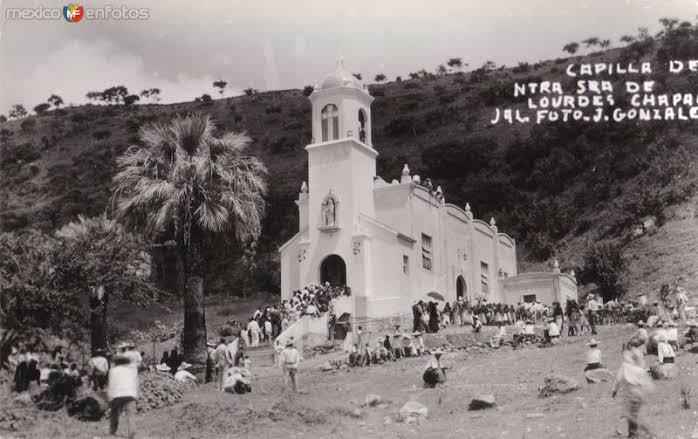
Photograph of the first years of the Lourdes Chapel. Photo: J. González.
Now it is the turn for the second generation of neighbors, the heirs of the luxurious country houses in Colonia Francesa and the inhabitants of the renowned neighborhood of Lourdes in Chapala, named in honor of their patron saint. These neighbors continue the restoration of the shrine week after week by selling churros, fritters, and sweets outside after mass, and others by making extravagant anonymous donations.
The fundraising work continues to help fund the remaining restoration work, and the next fair is already planned to be held on November 28 outside of the Parish of San Francisco de Asis. Another fair is planned for December 5 outside of the Chapel of Lourdes.
Translated by Kerry Watson.
Ajijic to celebrate its Patron Saint
Parish of San Andrés Apóstol, where the patron saint of Ajijic is located. The festivities in honor of San Andrés Apóstol take place from November 22 to 30. Photo: Sofía Medeles
Sofía Medeles (Ajijic, Jal.)– A few days before the start of the festivities in honor of the patron saint of Ajijic (November 22-30), the Chapala government has finally given the festivities a green light with conditions that guarantee they will be held as our ancestors used to do. That is to say, the old-fashioned way.
The municipal authorities conditioned its permission on a midnight shutdown time, a restricted capacity, sanitary filters run by the guilds, signage identifying entrances and exits, use of masks throughout the nine days of parties, and monitoring by the municipal government.
Maximiliano «Max» Macías, currently in charge of the Delegation office, commented that the delegation is working together with merchants, guilds and organizing groups to create a very healthy and old-fashioned celebration in the kiosk of the Plaza with small, local music groups. In the afternoon there will be cultural performances.
«The experience at the festivities will be different this time; people can come with the family, spend some time and have dinner. We are starting little by little and reactivating the economy. For example, merchants who have not been able to make a living, will be allowed to work, as long as they respect the requirements of the Ministry of Health,” said Max.
The calendar of activities for the novenario (nine days of parties) was published the delegation’s web page (Delegación Ajijic 2021-2024), which lists the guilds who have duty each day: on November 22nd, the musicians’ guild; on the 23rd, the merchants’ guild; on the 24th, terrace owners who reached an agreement; and on the 25th , the new youth guild. These have all agreed to bring musical groups (who will perform at the kiosk). From November 26th to 30th the activities to be carried out will depend on the budget of the remaining guilds.
Residents see this as good news and have expressed their enthusiastic approval in social networks and interviews conducted by Semanario Laguna.
«It is good because on the one hand we see how little by little we are getting out of this pandemic, and on the other hand because they give the population a space to have fun,» said Sara from Ajijic to Laguna.
Maximiliano «Max» Macías called upon those attending the celebrations in honor of Saint Andrew the Apostle, and the merchants at the festivities, to respect the conditions and the Covid measures, noting that violators may be penalized.
Translated by Dee Lynn
© 2016. Todos los derechos reservados. Semanario de la Ribera de Chapala
